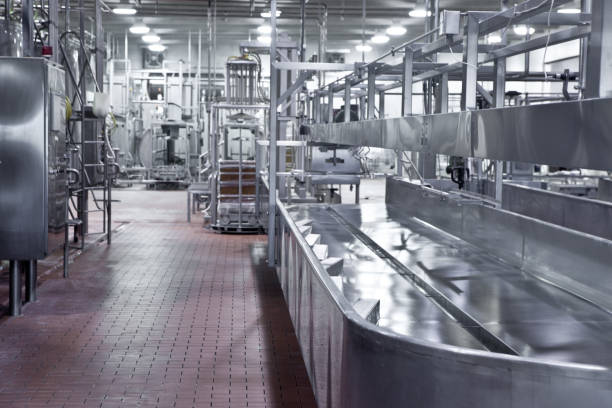In hospitality and chemical expertise, a recurring inquiry revolves around selecting the right chemicals within the food industry.
Reflecting on my humble beginnings as a dishwasher in a restaurant, it feels like eons have passed. Over the course of my career, I’ve navigated through a myriad of chemicals and cleaning solutions, accumulating valuable insights into diverse cleaning processes and the crucial task of selecting the appropriate chemicals.
Navigating the Labyrinth of Choices
For those engaged in the restaurant or food processing sector, varying cleaning standards are undeniable. Operators must adhere to specific criteria, ensuring the cleaning and sanitization of all areas. Establishments typically display these requirements on-site through wall charts as constant reminders for the staff.
The pivotal question arises: who is responsible for determining the correct chemical usage in cleaning? This question has significance as it’s not uncommon for me to encounter one product during a customer visit only to find a different product in the same area during a subsequent visit. Witnessing employees occasionally deviate from the specified Standard Operating Procedures (SOPs) when using cleaning products adds an extra layer of intrigue.
Before delving into the intricacies of choosing the right chemicals in the food industry, one must familiarize themselves with key terms:
1. **Dwell time or contact time:** This denotes how a disinfectant or other product should remain wet on a surface to achieve full effectiveness.
2. **Active ingredient:** The component in the cleaner responsible for cleaning and possibly disinfection and sanitization.
3. **Food contact, no-rinse (FCNR):** Chemicals suitable for use on food contact surfaces that do not require rinsing.
4. **Food contact, post-rinse required (FCR):** When applied to a food contact surface, these chemicals necessitate thorough rinsing with water.
5. **Hard non-porous (HN):** Chemicals designed for non-porous surfaces like faucets and doorknobs.
Decoding the Selection Process
Chemicals are crucial in every facet of cleaning within a food service kitchen. Whether cleaning surfaces or utensils, certain factors warrant consideration:
1. **Distinguish between cleaning and sanitizing:** While soap and water eliminate visible dirt and debris, sanitizing is imperative for eradicating bacteria and viruses.
2. **Purchase options:** Not all chemicals are universally applicable. Understanding the guidelines for equipment maintenance outlined in product specifications is paramount. Seek professional consultation, such as from individuals like myself, to ensure optimal choices.
Quantifying the Necessities
Understanding the required quantity of each chemical in a commercial kitchen is vital. Consider bulk purchasing or opting for refillable tanks for significant amounts. For visuals, explore examples on our homepage at ChemStation Boston http://www.chemstation-boston.com
Anecdotes from the Past
Reflecting on my early days as a cook, I recall the delivery of a hefty 55-gallon drum of general-purpose cleaner. At first glance, it seemed like a reasonable choice due to its versatility. However, the subsequent revelation of the product’s inferior quality and the manner of its sale revealed a different story. The steward responsible for ordering unknowingly fell into a repeated purchase cycle fueled by the chemical salesman’s frequent visits. I say this because I saw him drop silver dollars into the barrels and show many of us the value of using the product as fast as possible. This behavior was obviously good for us but not for the restaurant’s bottom line.
Embracing Change
Considering the heightened concerns surrounding hygiene, especially in the era of the coronavirus, it’s prudent to reassess and fortify cleaning and sanitizing programs. Conduct a thorough inventory, utilizing existing items before replenishing. Seek guidance from reputable sources when exploring new suppliers.
A Call For Change
Upgrading equipment, such as acquiring a new foamer or shop vac, can be transformative. However, it’s crucial not to be frugal at the cost of long-term savings. Equipment should be viewed as an investment designed to enhance efficiency, not merely as an expenditure.
A holistic approach to cleaning and sanitizing is imperative in these challenging times. At ChemStation Boston, our team offers the correct chemical solutions for your plant or kitchen and collaborates with you to tailor a program that aligns with your needs and budgetary considerations.
For those interested, our podcast, Cleaning Processes with Jerry https://hospitalitycleaning101.com/podcast, offers valuable insights, and you may even have the opportunity to be a guest.
Beyond being a vendor, ChemStation Boston aims to be your partner, with expertise in SQF, PSQI, and HAACP programs. Should you need assistance, feel free to reach out for a complimentary phone consultation. Our commitment is to serve your needs efficiently, and visits come at no cost after establishing your requirements over the phone.

